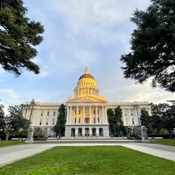
The Home Protection for Seniors, Severely Disabled, Families, and Victims of Wildfire or Natural Disasters Act (Proposition 19)
The following information is intended to help counties establish uniform and effective administrative practices for making and reporting their annual gain determinations to CDTFA. Information about the requirements imposed by Regulation 35401 is also included.
The Home Protection for Seniors, Severely Disabled, Families, and Victims of Wildfire or Natural Disasters Act (Proposition 19) was approved in the November 3, 2020, General Election.
Proposition 19 added sections 2.1, 2.2, and 2.3 to article XIII A of the California Constitution. Sections 2.2 and 2.3 provide a mechanism for the California Department of Tax and Fee Administration (CDTFA) to use state funds in the County Revenue Protection Fund to reimburse the counties and local agencies in the counties that have a revenue loss from the implementation of the property tax changes made by section 2.1. Section 2.3 also imposes new duties on counties and CDTFA as part of the reimbursement process.
CDTFA has adopted Regulation 35401, which:
- Requires the counties' annual gain determinations under subdivision (a) of section 2.3 to be made for the period February 16, 2021, through June 30, 2022, and for each subsequent fiscal year thereafter, beginning with fiscal year 2022- 2023; and
- Requires each county to report the gains it determines for the county and each local agency in the county to CDTFA every three years and makes January 31, 2025, the reporting due date for the counties to report the gains they determined for the first three determination periods.
How to Use This Guide
Each section of this guide contains important information regarding Proposition 19.
The Getting Started section provides background regarding sections 2.1, 2.2, and 2.3.
The Information section provides information regarding counties' new duties under section 2.3.
The Frequently Asked Questions (FAQs) section provides answers to frequently asked questions regarding Proposition 19.
Lastly, the Resources section provides links to additional information and statutory and regulatory information.
If You Need Help
If you need assistance with topics included in this guide — you can contact us by email.
